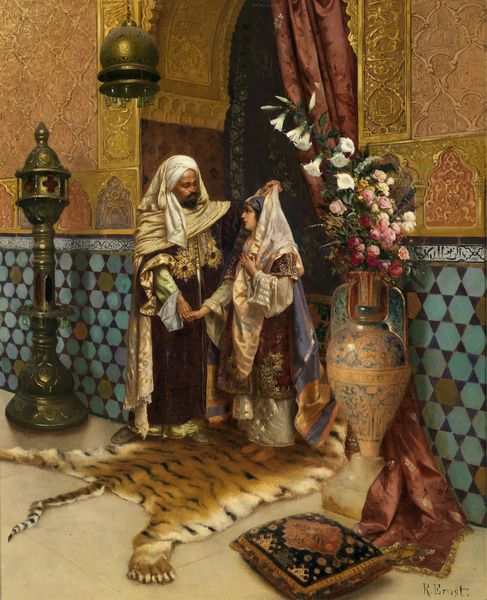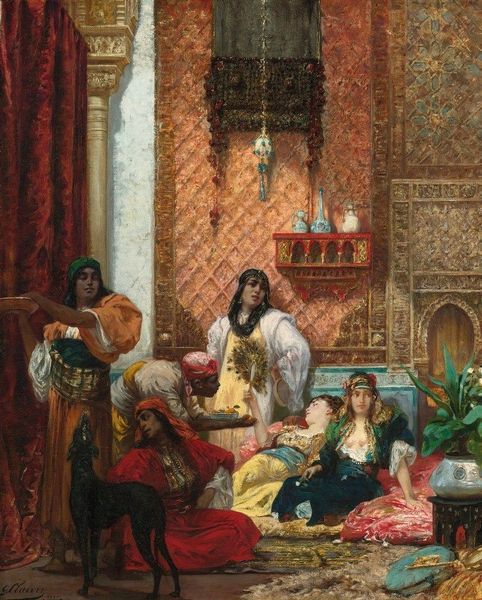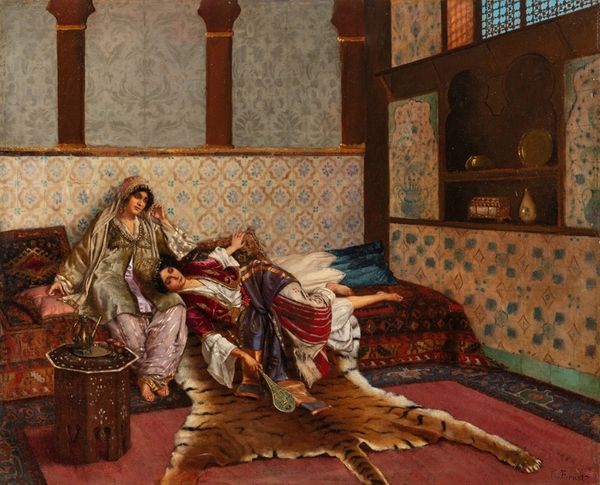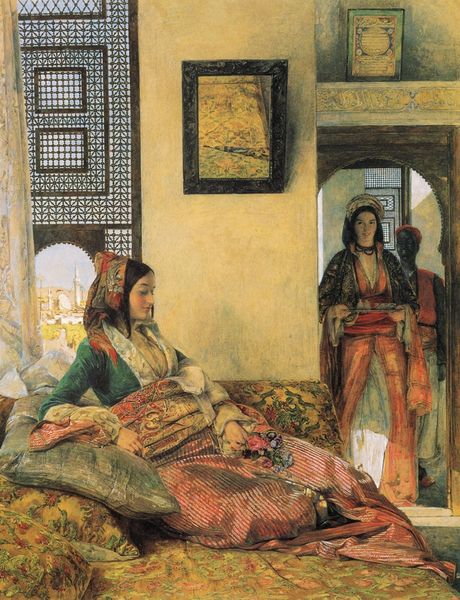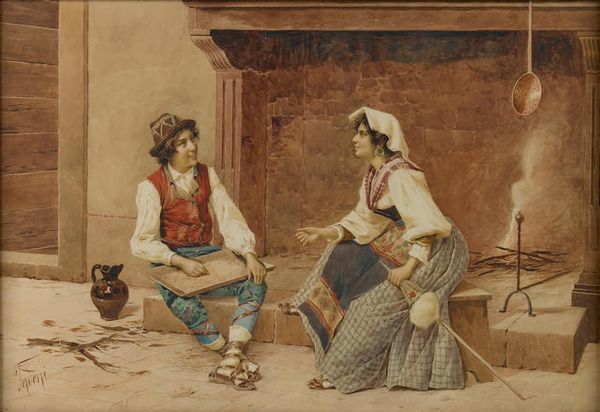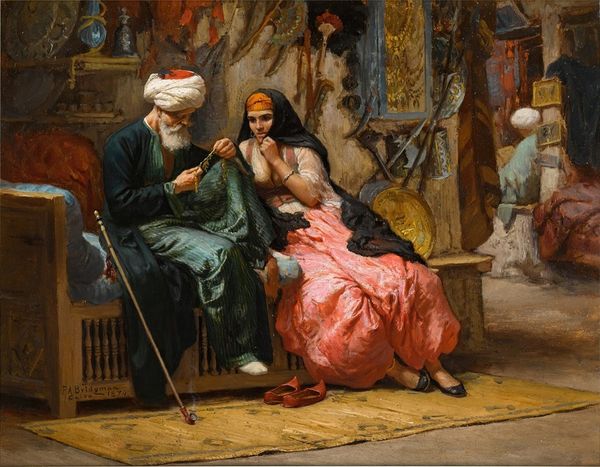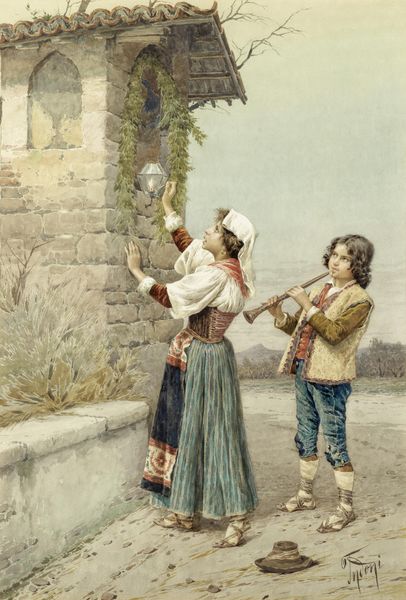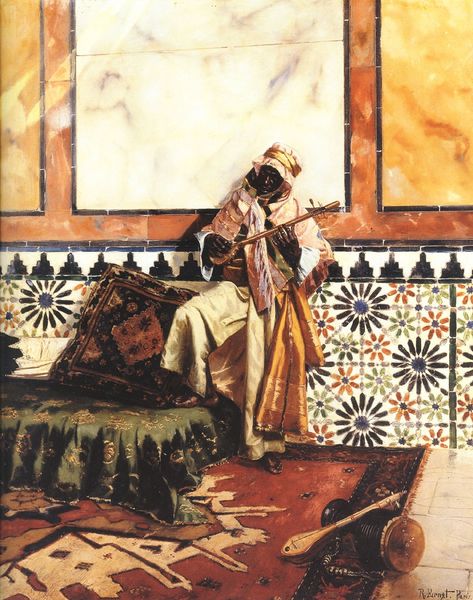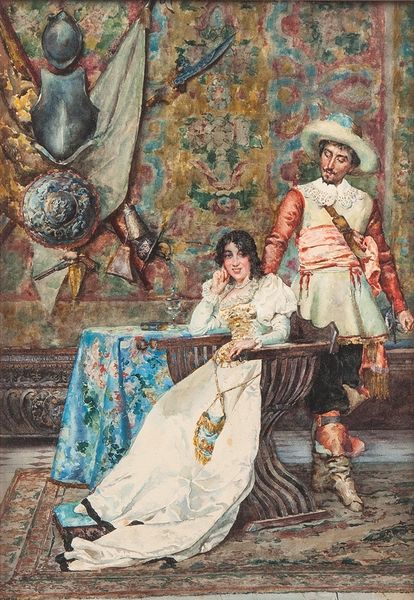
Copyright: Public domain
James Tissot created "The Harlot of Jericho and the Two Spies" using watercolor, and what I notice first is how he layers the colors. The painting feels like a slow build-up, like a recipe where each ingredient is added carefully, creating this kind of hazy, dreamlike scene. The texture is pretty smooth, which is typical of watercolors, but Tissot uses these washes to create depth. Look at the way the light hits the Harlot’s white robes, and how it contrasts with the darker, earthier tones of the spies. It's all about the balance between light and dark, and the transparency of the medium allows him to create a sense of glow. The way he renders her feet is interesting to me, such attention paid to her humanity, it’s like he’s saying, "These are real people, not just biblical figures." Thinking about the process, I'm reminded of artists like John Singer Sargent, who were masters of capturing light and atmosphere. Ultimately, Tissot is having a conversation with art history. He reminds us that art is an ongoing dialogue, a way of seeing and re-seeing the world.
Comments
No comments
Be the first to comment and join the conversation on the ultimate creative platform.

